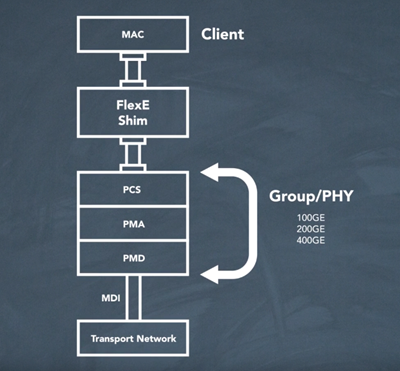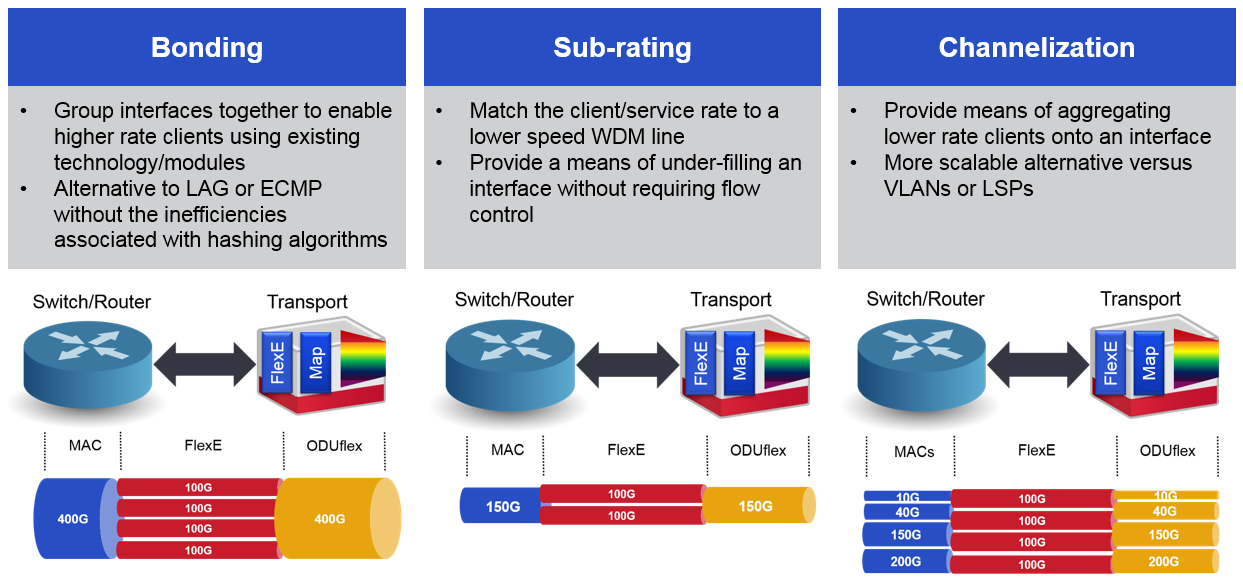What is FlexEthernet and why is it so important?
How many of you remember Gumby? That’s right, Gumby, the green claymation character from The Gumby Show which aired in the U.S. during the 1950s and 60s. And what is Gumby best known for? Being flexible. Stretchy. Adaptive. Perhaps we should think of Gumby as the patron saint of modern networking since flexibility has come to define the posture of winning in today’s tech world, second only to the endless need for more bandwidth.
You might consider FlexEthernet (FlexE) as the Gumby of network service interfaces, an evolution in the quest for flexibility. Or if we’re considering flexibility as more of a means to an end, the quest for success in efficiently scaling your network.
Ok, enough about vintage cartoon characters, let’s cut to the chase.
FlexEthernet, also called FlexE, is a flexible Ethernet client interface standard defined by the OIF Flex Ethernet Implementation Agreement. FlexE provides a generic mechanism of supporting a variety of Ethernet MAC rates (10G, 40G, nx25G) that may or may not correspond to existing Ethernet PHY (physical layer) rates.
This means that FlexE allows for flexible Ethernet connectivity between routers and optical transport equipment that is independent of the physical interfaces between the two devices. The net benefit is the ability to remotely adjust service bandwidth as needed, more efficiently utilize each networking layer, and improve end-to-end manageability of the network.
FlexE dissociates the Ethernet rate on the client side from the actual physical interface (also called server) by introducing a new shim through the IEEE defined MAC and PCS layers.
The Origins of FlexEthernet
 FlexE was
originally conceived to meet the challenges of Internet Content Providers (ICPs), to provide higher capacity and
more efficient data center interconnect (DCI). With the list of Ethernet standards for use in the data center
seemingly expanding by the day (e.g. 10GE, 25GE, 50GE, 100GE, 400GE), efficiently mapping these rates across an
optical transport network for data center interconnect gets increasingly complicated. That’s where
FlexEthernet comes into play.
FlexE was
originally conceived to meet the challenges of Internet Content Providers (ICPs), to provide higher capacity and
more efficient data center interconnect (DCI). With the list of Ethernet standards for use in the data center
seemingly expanding by the day (e.g. 10GE, 25GE, 50GE, 100GE, 400GE), efficiently mapping these rates across an
optical transport network for data center interconnect gets increasingly complicated. That’s where
FlexEthernet comes into play.
FlexE is all about introducing flexibility at the service layer. How does it work? FlexE dissociates the Ethernet rate on the client side from the actual physical interface (also called server) by introducing a new shim through the IEEE defined MAC and PCS layers. This creates new configuration options that can be used to realize the savings and scale that are so vital to networking success. The current FlexE standard is defined for 100G PHYs, with 200G/400G PHYs being defined in subsequent Implementation Agreements.
Examples of FlexEthernet in Action
Want to create a 400GbE connection between two data centers? FlexE allows you to deliver that 400GbE service through bonding, grouping 100G physical interfaces (i.e. using existing technology) between the router and transport equipment, and deliver that 400GE over 100G+ wavelength(s). Need to reduce Ethernet rates to match lower-speed DWDM lines? FlexE supports sub-rating to address this application, while being easier to operationalize than traditional methods. Need to more efficiently map multiple 10GbE, 25GbE and 50GbE services onto a 100G line? FlexE does the job, supporting channelization, providing a more scalable alternative versus VLANs or LSPs.
FlexE in an SDN World
As optical networks become more programmable, offering the dynamic, software-defined ability to tune line rates across a range of capacity options, FlexE is a key tool that enables Ethernet-based services to be mapped over a next-gen optical transport network with the most efficient utilization of capacity possible.
Ciena recently announced our Liquid Spectrum solution that combines programmable hardware with advanced software applications to provide increased automation and the ability to flexibly adjust capacity as needed in the network. Ciena’s new WaveLogic Ai coherent chipset expands channel capacity options from what has been possible to-date – allowing users to tune capacity from 100G to 400G in 50G increments. With FlexE, users will now have a very simple means of adjusting and matching the service rate to any flexible line rate - with no site visits required - resulting in a more efficient and simpler-to-manage network.
With FlexE, users will now have a very simple means of adjusting and matching the service rate to any flexible line rate - with no site visits required - resulting in a more efficient and simpler-to-manage network.
So where is FlexEthernet in the standards process and when will it be available? The first Implementation Agreement for FlexE was published by the OIF in the first quarter of 2016 and defines 100G PHYs. System vendors are in the process of implementing FlexE into their equipment and we will see the first FlexE-capable products starting to become available in 2018.
So let’s get back to Gumby.
Just how flexible is your network? Is it as adaptable as our green-colored hero from the beginning of this blog? Exactly how concerned are you about your network’s ability to efficiently scale to the changing demands of the future? If you’re ready to learn more about FlexE and just what it can do in your network then check out the below Ciena Chalk Talk video featuring Sebastien Gareau, one of our talented Hardware Systems Architects.
Start stretching, FlexE is coming.



